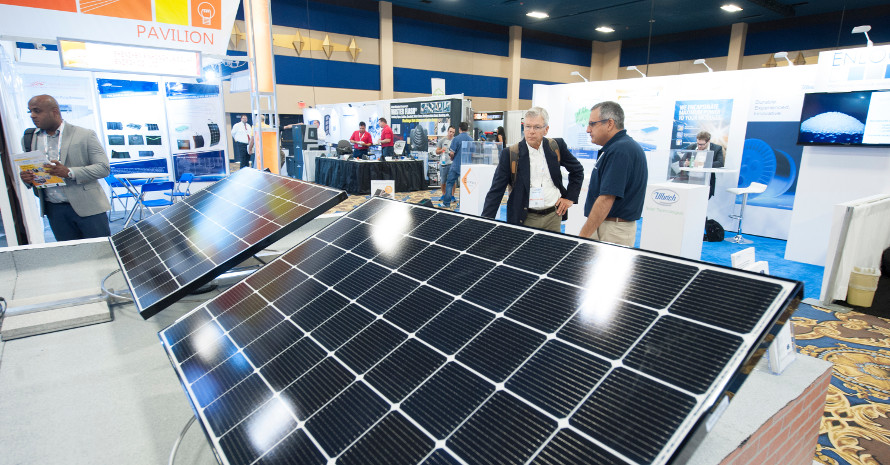As the biggest solar trade show in the United States, Solar Power International is as good a place as any to take the pulse of the U.S. solar industry. And this year’s show comes at a dramatic time, with record natural disasters in both Florida, Houston and the Pacific Northwest.
And we haven’t even gotten to the Section 201 investigation, the biggest un-natural disaster to come the way of the U.S. solar industry since drama surrounding the pending expiration of the Investment Tax Credit (ITC).
In the opening session featuring Smart Electric Power Association (SEPA’s) Julia Hamm and new Solar Energy Industries Association (SEIA) CEO Abigail Hopper, the trade case was an inevitable topic, especially for SEIA. Unlike previous CEO Rhone Resch who attempted to mediate between both sides in the 2012 and 2014 anti-dumping and anti-subsidy cases, Hopper has led SEIA to come out strongly against any potential trade remedies.
The opening session was no exception, with Hopper refusing to yield ground on manufacturing jobs, noting that despite the 26 module companies in the United States that have gone bankrupt in the last few years, that there are 38,000 employees in solar-related manufacturing in the United States. Many of these work not in cell and module production but in balance of systems like racking and tracking – a sector where the U.S. industry has come out strongly against trade action.
Hopper warned the crowd that this was not a struggle to sit out, noting that she does not “have a magic potion in my purse that can make trade cases go away”. But while SEIA turns up the political pressure, it is unclear how that will influence the U.S. International Trade Commission (ITC), which is an semi-judicial body whose decisions are not ratified by Congress, the Executive Branch, or anyone else.
In contrast to SEIA’s immediate activism, SEPA is emphasizing the longer game and bigger picture, including the integration of increasingly high penetrations of solar on the electric grid. This is something that SEIA is also involved in, with SEIA’s Hopper noting that the recent Department of Energy electric grid study came out better than expected.
However, here the discussion is not over either, and Hopper notes that the solar industry needs to “be in the room” during discussions of the future of the electric grid. SEPA CEO Julia Hamm noted that flexibility is particularly important for integrating higher levels of renewable energy.
SEIA and SEPA are bringing these issues to a growing industry, with many new faces. As of Sunday morning SPI had nearly 18,000 registered attendees, which is already as many people as attended last year. And when Hopper asked for how many of the hundreds in the opening session this was their first SPI, over half of the hands in the room shot up.
And this is an increasingly diverse workforce. Diversity has been a continual talking point of Hopper’s since she come on as CEO of SPI last last year, and during her presentation she was sure to point out the findings of a new report on workforce diversity issued by the Solar Foundation. Hopper says that while the industry has come a long way, there is still a long way to go.
This content is protected by copyright and may not be reused. If you want to cooperate with us and would like to reuse some of our content, please contact: editors@pv-magazine.com.









By submitting this form you agree to pv magazine using your data for the purposes of publishing your comment.
Your personal data will only be disclosed or otherwise transmitted to third parties for the purposes of spam filtering or if this is necessary for technical maintenance of the website. Any other transfer to third parties will not take place unless this is justified on the basis of applicable data protection regulations or if pv magazine is legally obliged to do so.
You may revoke this consent at any time with effect for the future, in which case your personal data will be deleted immediately. Otherwise, your data will be deleted if pv magazine has processed your request or the purpose of data storage is fulfilled.
Further information on data privacy can be found in our Data Protection Policy.